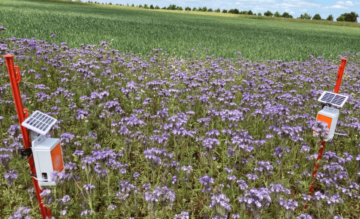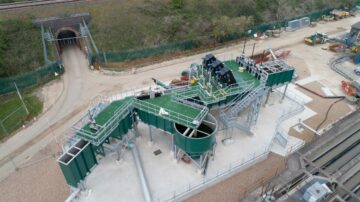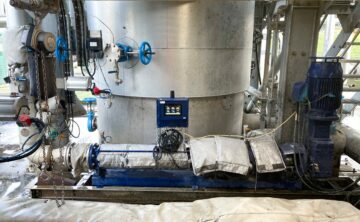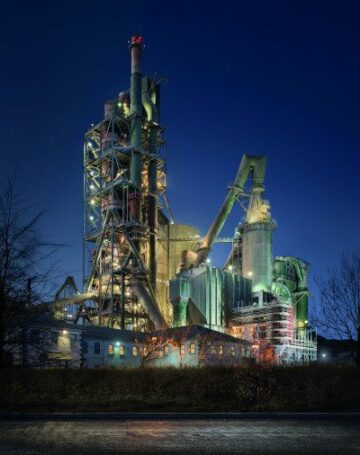
World Trade Center responders had a higher likelihood of developing liver disease if they arrived at the site right after the attacks as opposed to working at Ground Zero later in the rescue and recovery efforts, according to findings reported by researchers working with the Mount Sinai Health System in New York. Their study seemingly links the increase in liver disease risk to the quantity of toxic dust the workers were exposed to, which was greatest immediately after the September 11, 2001, attacks.
The study was published in the American Journal of Industrial Medicine in July.
The liver is often affected by chemical exposures due to its role in detoxifying foreign substances, and the liver disease whose early signs were detected in this study, hepatic steatosis, is associated with chemical exposures. Steatosis means that the liver contains abnormally high levels of fat.
In the aftermath of the 2001 attack, more than 20,000 responders were exposed to dust, airborne particulates, and chemicals known to cause liver toxicity, increasing their risk for toxicant-associated fatty liver disease, including the most serious form—toxicant-associated steatohepatitis—which can lead to liver failure and liver cancer. Mount Sinai monitors these responders as part of a federal World Trade Center Health Program under the direction of Michael Crane, MD.
“Our study showed that continued monitoring for liver disease is warranted in World Trade Center responders—such as law enforcement, fire, and recovery workers in any field at the site—particularly those who arrived at or shortly after the attacks and had a higher exposure to the toxic dust,” said the study’s senior author, Claudia Henschke, MD, PhD, Professor of Diagnostic, Molecular and Interventional Radiology at the Icahn School of Medicine at Mount Sinai. “At the moment, there are no protocols to monitor responders for liver disease, so this study points to the need to further study this issue in this at-risk population.”
Researchers discovered the liver disease by analyzing lung scans of 1,788 World Trade Center responders being monitored by Mount Sinai’s World Trade Center Health Program Clinical Center of Excellence. While the scans were given to monitor the responders for lung disease that has been well established as a health issue related to exposure at Ground Zero, researchers developed an algorithm that found evidence of liver disease in the portion of the liver visible in the scans.
The algorithm was able to find lower density in the liver, which is evidence of hepatic steatosis, in slightly more than 14 percent of the responders. Researchers later found that responders who arrived earlier—within about two weeks of the attack—and had a higher exposure to the toxic dust at the World Trade Center site had more evidence of liver disease in their scans. Responders with particularly low density are being evaluated for possible referral to liver specialists for diagnosis and treatment.
“Our previous work found evidence of liver disease was three times higher in the lung scans of World Trade Center responders compared to other patients’ lung scans, so this new study suggests that responders who arrived at Ground Zero earlier should receive enhanced monitoring for liver disease,” said the study’s first author, Artit Jirapatnakul, PhD, Assistant Professor of Diagnostic, Molecular and Interventional Radiology at Icahn Mount Sinai. “Now that we have this link, the next step is to understand why or how the toxic dust actually causes liver damage.”
It is also critical to further define the characteristics and prevalence of liver damage in World Trade Center responders and to educate the responders and their providers about the potential benefits of liver cancer screening for those at high risk, according to another author, Andrea D. Branch, PhD, Professor of Medicine (Liver Diseases) at Icahn Mount Sinai and the director of an ongoing study sponsored by the National Institute for Occupational Safety and Health that is investigating evidence of toxicant-associated steatohepatitis in responders to the World Trade Center attack.
- 000
- 11
- algorithm
- Assistant
- Attacks
- Cancer
- Cause
- chemical
- chemicals
- content
- credit
- Director
- discovered
- Disease
- diseases
- Early
- Failure
- Federal
- Fire
- First
- gif
- Health
- High
- How
- HTTPS
- image
- Including
- Increase
- industrial
- July
- Law
- law enforcement
- lead
- LINK
- medicine
- monitoring
- New York
- Other
- population
- Program
- radiology
- recovery
- Referral
- Risk
- Safety
- School
- Signs
- So
- Sponsored
- Study
- system
- trade
- treatment
- WHO
- Work
- workers
- world
- zero











